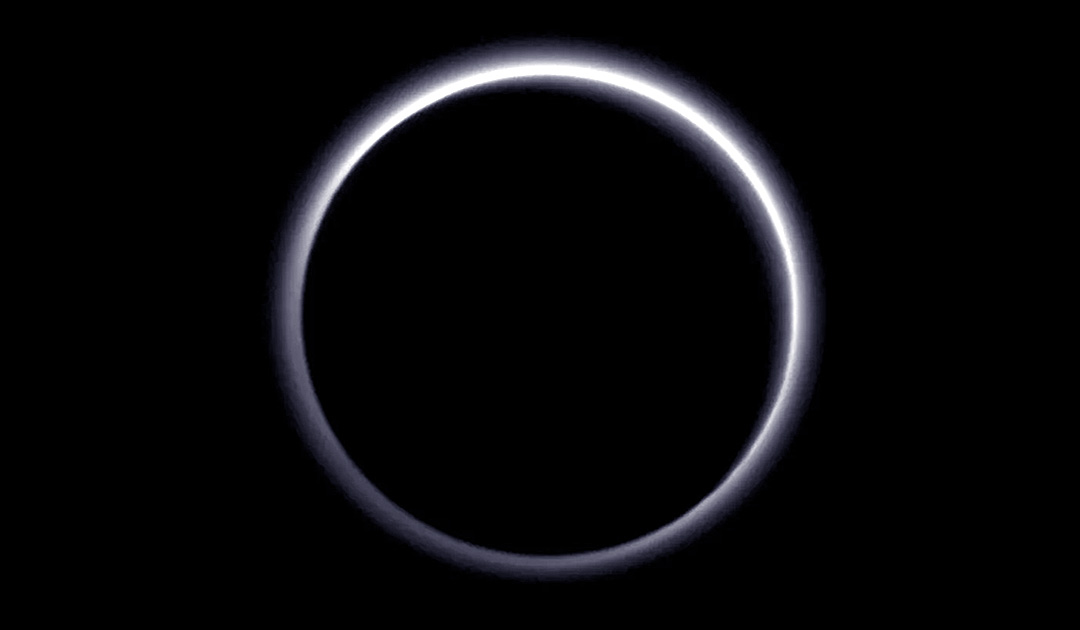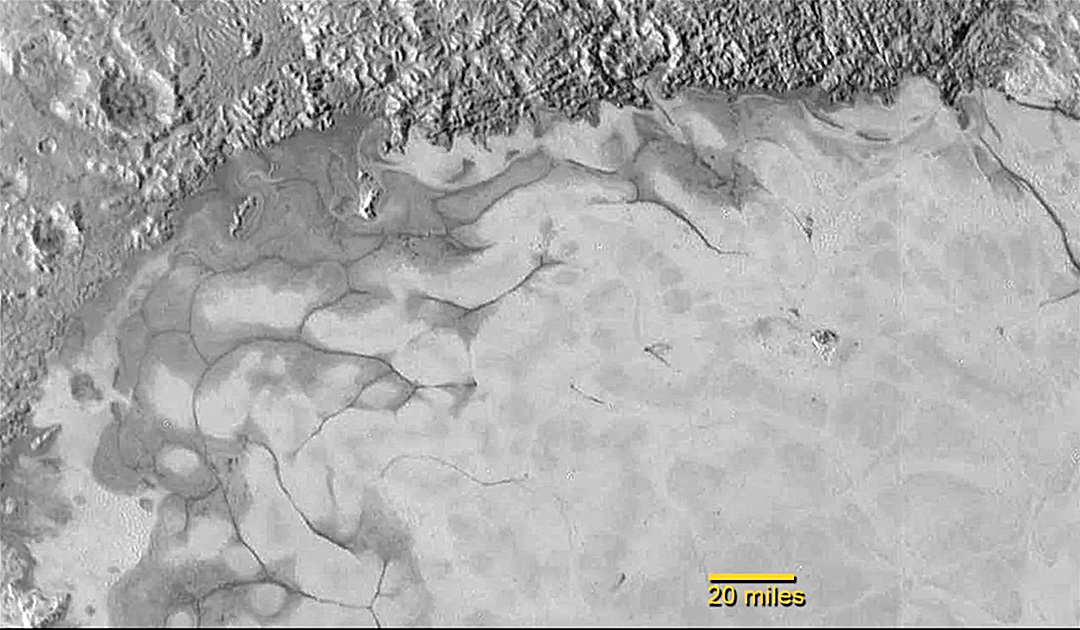
The small planet Pluto is a complex and mysterious world with mountains, valleys, plains, craters and glaciers. A recent analysis fuels speculation that the atmosphere contains particles of frozen organic compounds. This could explain the characteristic bluish haze that envelops the dwarf planet. The suspicion arose after the flyby of the space probe “New Horizons”, when it took a backlight image of the light of the sun from behind.

Both Pluto, with a volume one-third that of Earth’s moon, and Saturn’s moon Titan, more than twice its size, have hazy atmospheres and similar atmospheric compositions. Therefore, planetary scientists suspect that Pluto’s haze, like Titan’s, is formed by light-driven chemical reactions that yield complex organic compounds.
The team found that organic compounds condense more easily in Pluto’s atmosphere than in that of Saturn’s moon Titan because the dwarf planet’s atmosphere is colder than that of the large moon, at minus 240 degrees Celsius. The resulting organic ice particles are likely a major contributor to Pluto’s haze.
Pluto’s atmosphere extends up to 1,600 kilometers above Pluto’s surface and consists mainly of nitrogen and carbon monoxide and 0.5% methane. The “New Horizons” probe discovered two layers of fog in the atmosphere. One layer reaches up to a height of 50 kilometres, the second haze layer up to 130 kilometres.

Pluto appears to be iced over
Some of the images taken by “New Horizons” show enlarged representations of Pluto’s surface. It hosts strikingly diverse landscapes. The plain is relatively smooth, but the land around its edges is not. Steep icy mountains and eroded, pockmarked landscapes ring part of the western half. To the north, on the edge of a vast ice field, glaciers of flowing frozen nitrogen push across the undulating surface.
Still worth mentioning is the orbital period of Pluto. While the Earth orbits the sun once a year, the small planet needs an incredible 248 years. Every second, Pluto travels 4.67 kilometers during its orbit.
Heiner Kubny, PolarJournal





